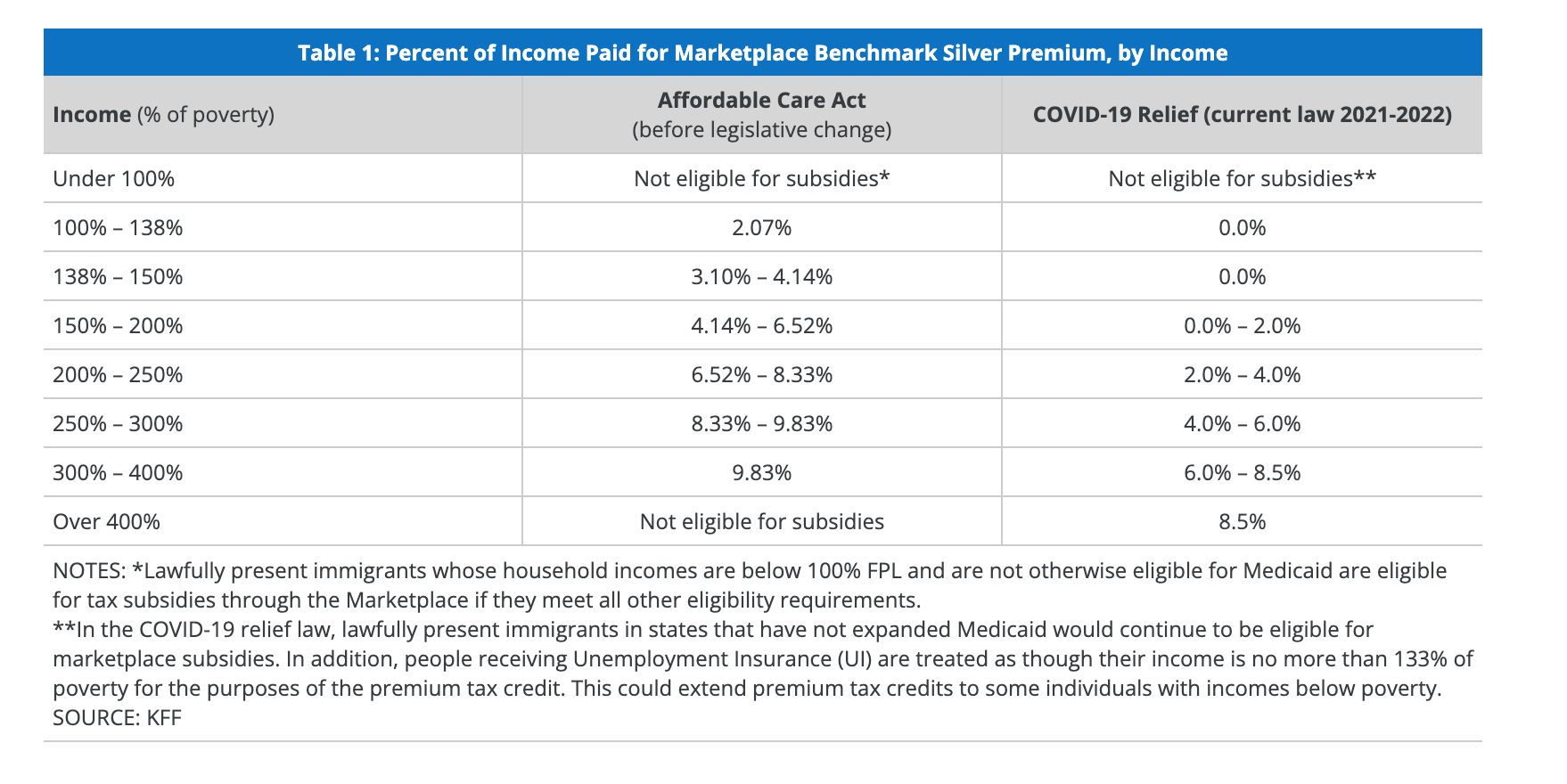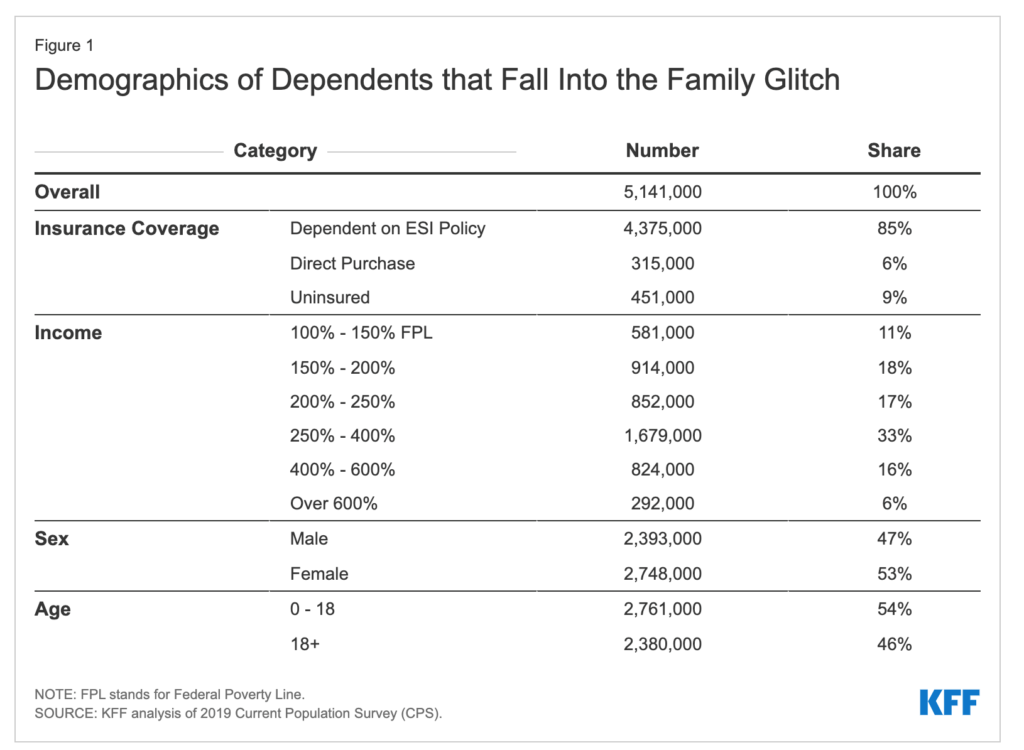

By Kirsten Siebenga
The Affordable Care Act (ACA), enacted in 2010 under former President Obama, aimed to make health coverage more affordable for all Americans. Drafters of the ACA hoped to accomplish this through avenues like creating a Federal Health Insurance Marketplace, expanding Medicaid eligibility, and premium tax credits.
Individuals with incomes 100%-400% of the Federal Poverty Level who didn’t have access to affordable health coverage through an employer were eligible for premium tax credits for health coverage purchased on the Health Insurance Marketplace. As seen in the Kaiser Family Foundation chart below, affordability of coverage under the ACA was defined as premium costs below 9.83% of the individual’s monthly income. The premium tax credits provided a subsidy to put toward individuals’ monthly health insurance premiums.

The keyword above is individuals. Because of how the law was initially interpreted, individuals who were looking for coverage for partners, children, or other dependents were largely omitted from these subsidies, leading to much higher costs to cover additional family members. In many cases, families were spending on average upwards of $22,000 a year on coverage, leaving many with no other option but to pay the high cost of health coverage for their families or remain uninsured. This has been called the “family glitch.”
The Kaiser Family Foundation reports in the chart below that more than half of those who fall into the family glitch are children under age 18, and a majority are female. Most also are not income-eligible for Medicaid or other public health insurance. In North Carolina, the Kaiser Family Foundation estimates that 148, 000 fall into the family glitch. The family glitch and subsequent uninsurance are of concern nationally and within North Carolina because, as research has documented, uninsurance can lead to financial hardship and reduced access to care, including preventive screenings and services for cancer, heart disease, and diabetes.

Earlier this month, President Joe Biden proposed a rule that would fix the family glitch. The proposed rule would expand the definition of “affordable” to include the cost to insure family members and dependents, not just the individual, when determining the affordability of coverage. If the employee, for example, is not offered affordable coverage for their family members or dependents through their employer, family members will be eligible for premium tax credits on the Health Insurance Marketplace. Estimates suggest that changing the family glitch would give coverage to 200,000 previously uninsured Americans and 1 million Americans would gain access to premium tax credits, reducing the cost of their monthly health insurance premiums.
The recent passage of the American Rescue Plan Act (ARPA), has relevance here. ARPA expanded eligibility for premium tax credits to those above 400% of the federal poverty level, while also authorizing individual eligibility for premium tax credits if an individual’s health insurance premium cost exceeded 8.5% of their monthly income. These two provisions are set to expire at the end of 2022, but as the Kaiser Family Foundation reports, ARPA and the family glitch fix would expand coverage to nearly all of the 5.1 million Americans who fell into the gap for at least the rest of this year.
In North Carolina, fixing the family glitch would translate to expanding coverage to children who don’t qualify for Medicaid or the Children’s Health Insurance Program (CHIP). Using the Kaiser Family Foundation estimates, fixing the family glitch will expand affordable coverage to around 80,000 children in North Carolina under 18 who previously fell into the gap. This is an important step toward the goals of the NCIOM’s work as the backbone organization for the implementation of recommendations of the Task Force on Essentials for Childhood. The task force focused on strategies to address social norms change and economic support for families, especially around family-friendly workplace policies.